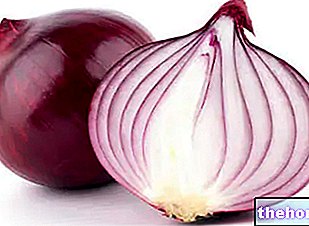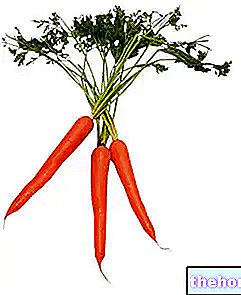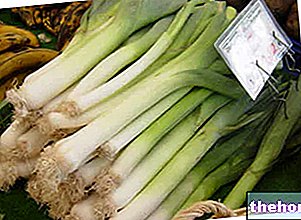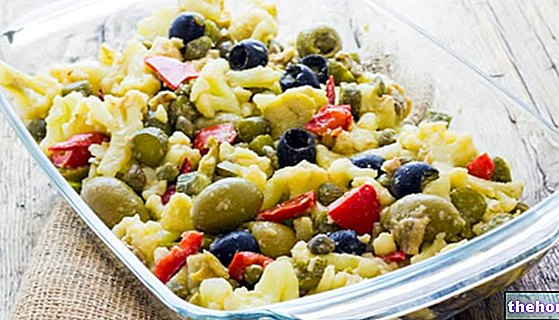Generality
The agretti - or friar beard or beard of the Negus - are foods that belong to the group of vegetables and greens. They are suitable for consumption through cooking and are a product, widespread throughout the Italian peninsula, ideal especially for the preparation of side dishes.

Agretti have an annual life cycle and their availability on the market corresponds to the early spring and summer period. ATTENTION! The agretti or friar's beard are suitable for food consumption almost exclusively in the form of young plants and sprouts.
In the past, the friar's beard also had uses other than food. Specifically, being rich in sodium, the agretti were dried, burned and processed to extract the soda (alkaline compound necessary for various manufacturing processes).
Description, origins and cultivation
The friar's beard is a small herbaceous plant (about half a meter in height). It forms small bushes that are quite easy to identify and is filiform, fleshy, full and turgid to the touch.

The friar's beard is native to Europe, Asia and northern Africa; it grows abundantly in the maritime coasts and requires a particularly sandy and sodium-rich soil (also abundant in the plant itself). Thanks to its adaptability, it seems to take root optimally even on the American continent.
Agretti are very common foods in the gastronomic culture of European countries overlooking the Mediterranean Sea; they represent an ordinary product especially in the diet of Italians and Spaniards.
Agretti can be harvested or cultivated; the search for the wild plant, as anticipated, must necessarily take place in the spring period (March-May), concentrating on the coastal territories. As far as agriculture is concerned, on the other hand, cultivation is carried out on poor, draining and sandy soils, also rich in sodium (halophilic plant); the plants also require excellent sun exposure. The sowing must be abundant and, alternatively, it is possible to put the small plants on the ground in the autumn months.
NB. The friar's beard requires constant pruning to prevent it from growing and wooding excessively.
Gastronomic uses
The friar's beard is particularly renowned for its acidulous, bitter and characteristic taste. The leaves and stems are consumed, provided they are obtained from the buds of the adult plant or from small plants appropriately deprived of the most leathery portions (at the roots). It is necessary to wash it carefully, both in case of collection and in case of purchase; this is due to the fact that, growing in particularly draining soils, it often retains small residues of sand.
The favorite consumption of agretti is by boiling (in insipid water for about a quarter of an hour) or by steaming; after cooling, they can be seasoned with lemon juice and extra virgin olive oil, or accompanied by tomato and anchovies (typical combination of southern Italy).
The friar's beard is rarely eaten raw; this requires the use of extremely young and tender raw materials. On the other hand, when cooked, in addition to serving as a side dish, the agretti make up accompanying sauces for first courses and fillings for savory appetizers; however, these are decidedly marginal destinations with respect to the above.
Nutritional characteristics
Agretti are low-energy foods, with a small portion of carbohydrates and an almost insignificant fraction of proteins and lipids. The fibers are abundant and very useful when reaching the recommended ration. The friar's beard performs in an excellent way the function of satiating food, regulator of lipid absorption and moderator of the glycemic index of the meal; due to these characteristics, agretti are highly suitable for diets against overweight, type 2 diabetes mellitus and hyperlipemia.
On the other hand, not being in possession of the relative sodium and potassium content, it is not possible to state with certainty what their relevance may be in the diet against hypertension.
The friar's beard also contains good concentrations of calcium, vit. A and small amounts of vit. C and B vitamins.
Nutritional values
Nutritional composition per 100g of raw Agretti; Agretti cooked, boiled without salt - Reference values of the INRAN Food Composition Tables.

Other Foods - Vegetables Garlic Agretti Asparagus Basil Beets Borage Broccoli Capers Artichokes Carrots Catalonia Brussels sprouts Cauliflower Cabbage and Savoy cabbage Red cabbage Cucumber Chicory Turnip greens Onion Sauerkraut Watercress Edamame Chives Chanterelles Flour Cassava Flowers Pumpkin Flour Edible Flowers Pumpkin Seasonal Fruits and Vegetables Endive Salads and Salads Strengthening Salad Lettuce Aubergines Vegetables Nettle Pak-Choi Parsnip Potatoes American Potato Peppers Pinzimonio Tomatoes Leeks Parsley Radicchio Turnips Red Turnips Radishes Rocket Shallots Endive Celery Celeriac Seeds Sprouted Spinach Truffle Valianamberi or Jerusalem artichoke laxatives Saffron Pumpkin Zucchini Vegetables - Nutritional properties OTHER VEGETABLE ITEMS Categories Food Alcoholics Meat Cereals and derivatives Sweeteners Sweets Offal Fruit Dried fruit Milk and derivatives Legumes Oils and fats Fish and fishery products Cold cuts S pezie Vegetables Health recipes Appetizers Bread, Pizza and Brioche First courses Second courses Vegetables and Salads Sweets and Desserts Ice creams and sorbets Syrups, liqueurs and grappa Basic preparations ---- In the kitchen with leftovers Carnival recipes Christmas recipes Light diet recipes Women's Day, Mum, Dad Recipes Functional Recipes International Recipes Easter Recipes Recipes for Celiacs Recipes for Diabetics Recipes for Holidays Recipes for Valentine's Day Recipes for Vegetarians Protein Recipes Regional Recipes Vegan Recipes



















-nelle-carni-di-maiale.jpg)








